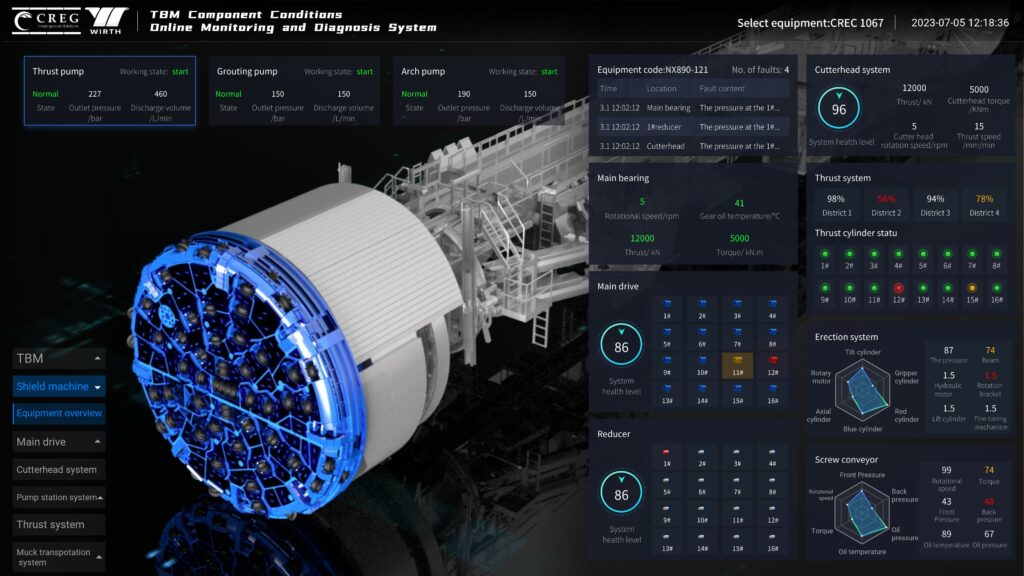China Railway Engineering Equipment Group Co., Ltd. (CREG) has announced the research and development of the TBM Component Conditions Online Monitoring and Diagnosis System (TOMD) – an integration of the manufacturing experience of more than 1000 TBMs and the integration of AI technology. CREG describes TOMD as the first predictive maintenance system for full face TBM condition.
The system has a host of functions, including TBM multi-source information perception, component condition online assessment and fault information self-diagnosis. CREG says it can help the operator check TBM operation and maintenance information in the control cabin, ground monitoring centre and remote management centre, assist the construction party in improving the maintenance efficiency greatly and guarantee the TBM runs in the best condition.
The system is also equipped with a series of sensors and computing intelligent terminals such as the acceleration sensor, the temperature sensor, the pressure sensor for the tail seal system, the perception sensor for the cutter head and cutting tool condition, the online analysis for hydraulic oil and muck discharge characteristics, which can all help the client command the most sensitive components or the system running condition at all times.
By using big data analysis technology, CREG says it has developed various AI big data warning models for the main drive system, hydraulic system, and tail seal system to allow the intelligent diagnosis of the TBM’s running condition. By relying on this system, CREG adds that it can provide TBM predictive maintenance services for clients.
The TBM “CREC 1126” manufactured by CREG and applied on the Shenzhen Metro Airport Line project has been equipped with the TOMD system which allows the operator to carry out predictive maintenance on the TBM according to the operating parameters and sensing systems of its key components.
In addition to conventional sensing systems, the temperature sensor, pressure sensor, vibration sensor and others are also fitted to the specific positions on key components; including main bearings, main motors and hydraulic pumps to acquire a greater range of condition parameters. This data is analysed by AI and then transmitted to the PLC, the remote monitoring platform and mobile terminals, so that the operator, engineer and manager can check information within the limits of their authority and respond accordingly.

CREC 1067 with the TOMD system
Comments: